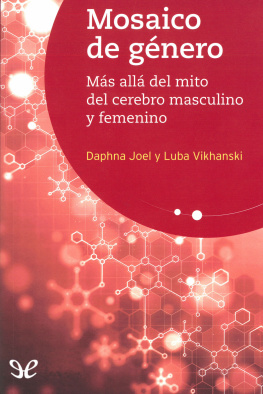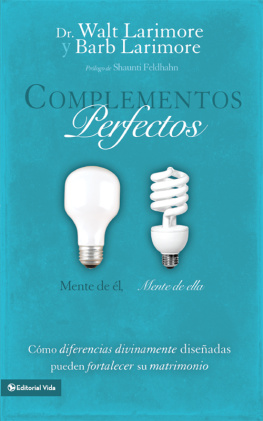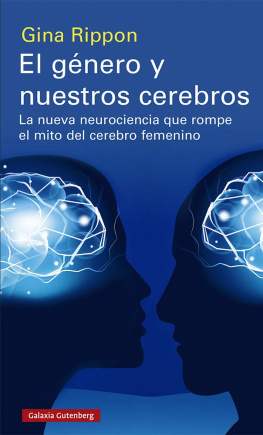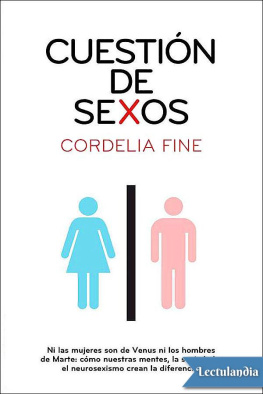
Daphna Joel es profesora de Psicología y Neurociencias en la Universidad de Tel Aviv. Combinando su experiencia como neurocientífica con su interés en los estudios de género, ha revolucionado el campo del sexo, el cerebro y el género (https://people.socsci.tau.ac.il/mu/daphnajoel/academicpublications/).

Luba Vikhanski es graduada en el Programa de Ciencia, Salud y Medio Ambiente de la Universidad de Nueva York. Trabaja como escritora de ciencia en el Instituto Científico Weizmann. Es autora de Immunity.
Para nuestras madres
Título original: Gender mosaic, beyond the myth of the male and female brain
Daphna Joel & Luba Vikhanski, 2020
Traducción: Antonio Francisco Rodríguez Esteban
Editor digital: Titivillus
ePub base r2.1

Notas
[1] Marwha, D., M. Halari y L. Eliot. «Meta-analysis reveals a lack of sexual dimorphism in human amygdala volumen». Neuroimage 147, 2017, págs. 282-94.
[2] Citado en Schiebinger, L. The Mind Has No Sex? Women in the Origins of Modern Science. Cambridge, MA: Harvard University Press, 1989, pág. 217. [Versión castellana: ¿Tiene sexo la mente? Madrid: Cátedra, 2004].
[3]Ibid.
[4]Ibid., pág. 189.
[5]Ibid., pág. 215.
[6] Shields, S. A. «Functionalism, Darwinism, and the psychology of women: A study in social myth». American Psychologist 30, 1975, págs. 739-54.
[7] Citado en Blum, D. Sex on the Brain. Nueva York: Penguin Book, 1997, pág. 38.
[8] Romanes, G. J. «Mental differences between men and women». Nineteenth Century 21, 1887, págs. 654-72. Citado en Shields, «Functionalism, Darwinism, and the psychology of women».
[9] Mazón, P. M. Gender and the Modern Research University: The Admission of Women to German Higher Education, 1865-1914. Palo Alto, CA: Stanford University Press, 2003, pág. 89.
[10] Shields, «Functionalism, Darwinism, and the psychology of women».
[11]Ibid.
[12] Patrick, G. T. W. «The psychology of women». Popular Science Monthly 47, 1895, pág. 212. Citado en Shields, «Functionalism, Darwinism, and the psychology of women».
[13] Schiebinger, The Mind Has No Sex?, pág. 2.
[14] El debate de 56 minutos está disponible en www.youtube.com/watch?v=64fPSH5qqS4. Visitado el 17 de enero de 2019.
[15] Ruigrok, A. N. V., et al. «A meta-analysis of sex differences in human brain structure». Neurosicence & Biobehavioral Reviews 39, 2014, págs. 34-50.
[16] Ritchie, S. J., et al. «Sex differences in the adult human brain: Evidence from 5,216 UK Biobank participants». Cerebral Cortex 28(8), 2018, págs. 2959-75.
[17]Ibid.
[18] Shaywitz, B. A., et al. «Sex differences in the functional organizaron of the brain for language». Nature 373 (6515), 1995, págs. 607-9.
[19] Sommer, I. E. «Sex differences in handedness, asymmetry of the planum temporale and functional language lateralization», Brain Research 1206, 2008, págs. 76-88.
[20] Gilmore, J. H., R. C. Knickmeyer y W. Gao. «Imaging structural and functional brain development in early childhood». Nature Reviews-Neuroscience 19(3), 2018, págs. 123-37.
[21] Maguire, E. A., K. Woollett y H. J. Spiers. «London taxi drivers and bus drivers: A structural MRI and neuropsychological analysis». Hippocampus 16, 2006, págs. 1091-1101.
[22] Karni, A., et al. «The acquisition of skilled motor performance: Fast and slow experience-driven changes in primary motor cortex». Proceedings of the National Academy of Sciences, USA 95(3), 1998, págs. 861-68.
[23] Turkeltaub, P. E., et al. «Development of neural mechanisms for reading». Nature Neuroscience 6(7), 2003, pág. 767.
[24] Goffman, E. Gender Advertisement. Londres: The Macmillan Press Ltd., 6(7), 1979 [1976], pág. 767.
[25]Ibid.
[26] Richardson, S. S. Sex Itself: The Search for Male and Female in the Human Genome. Chicago: University of Chicago Press, 2013.
[27] Hyde, J. S., et al. «The future of sex and gender in psychology: Five challenges to the gender binary». American Psychologist 74, 2018, págs. 171-93; Van Anders, S. M. «Beyond Masculinity: Testosterone, gender/sex, and human social behavior in a comparative context». Frontiers in Neuroendocrinology, 2013, 34, págs. 198-210.
[28] Van Anders, «Beyond masculinity».
[29] Abraham, E., et al. Father’s brain is sensitive to childcare experiences. Proceedings of the National Academy of Sciences, USA 111(27), 2014, págs. 9792-97.
[30] Shors, T. J., C. Chua y J. Falduto. «Sex differences and opposite effects of stress on dendritic spine density in the male versus female hippocampus». Journal of Neuroscience 21(16), 2001, págs. 6292-97.
[31] Joel, D. y M. M. McCarthy. «Incorporating sex as a biological variable in neuropsychiatric research: Where are we now and where should we be?». Neuropsychopharmacology 42(2), 2017, págs. 379-85. Véase figura 2 para un resumen de los efectos directos e indirectos del sexo.
[32] Shors, T. J. «Opposite effects of stressful experience on memory formation in males versus females». Dialogues in Clinical Neuroscience 4(2), 2002, págs. 139-47.
[33] Juraska, J. M., et al. «Sex differences in the dendritic branching of dentate granule cells following differential experience». Brain Research 333(1), 1985, págs. 73-80.
[34] Joel, D. «Genetic-gonadal-genitals sex (3G-sex) and the misconception of brain and gender, or, why 3G-males and 3G-females have intersex brain and intersex gender». Biology of Sex Differences 3, 2012, pág. 27.
[35] Reich, C. G., M. E. Taylor y M. M. McCarthy. «Differential effects of chronic unpredictable stress on hipocampal CB1 receptors in male and female rats». Behavioral Brain Research 203(2), 2009, págs. 264-69.
[36] García-Falgueras, A., et al. «Galanin neurons in the intermediate nucleus (InM) of the human hypothalamus in relation to sex, age, and gender identity». Journal of Comparative Neurology 519(15), 2011, págs. 3061-84.
[37] Chung W. C. J., G. J. De Vries y D. F. Swaab. «Sexual differentiation of the bed nucleus of the stria terminalis in humans may extend into adulthood». Journal of Neuroscience 22(3), 2002, págs. 1027-33.
[38] Joel, D. «Male or female? Brains are intersex». Frontiers in Integrative Neuroscience 5, 2011, pág. 57; Joel, D. «Genetic-gonadal-genitals sex (3G-sex) and the misconception of brain and gender, or, why 3G-males and 3G-females have intersex brain and intersex gender». Biology of Sex Difference 3, 2012, pág. 27.
[39] Juraska, J. M. «Sex differences in “cognitive” regions of the rat brain». Psychoneuroendocrinology 16(13), 1991, págs. 105-19.
[40] Yankelevitch-Yahav, R. «The effects of postnatal administraron of the selective serotonin reuptake inhibitor fluoxetine on female and male rats». Tesis de doctorado bajo la supervisión de D. Joel, Universidad de Tel Aviv, 2018.














